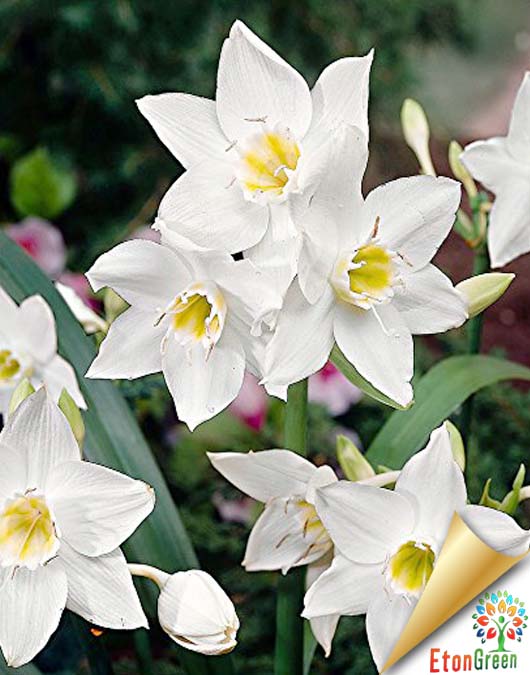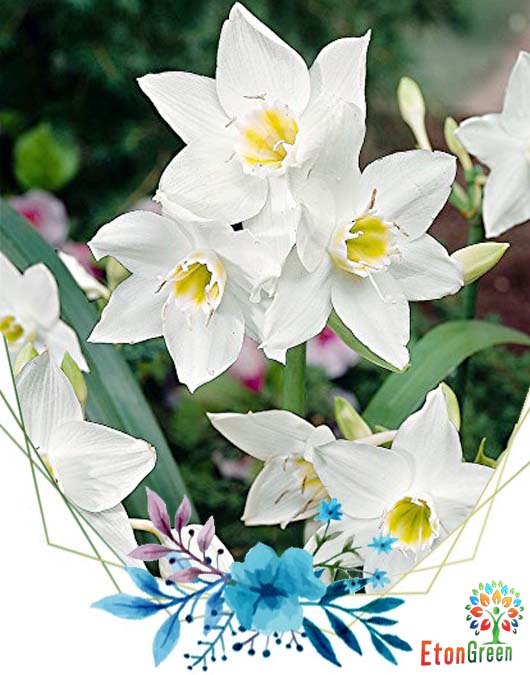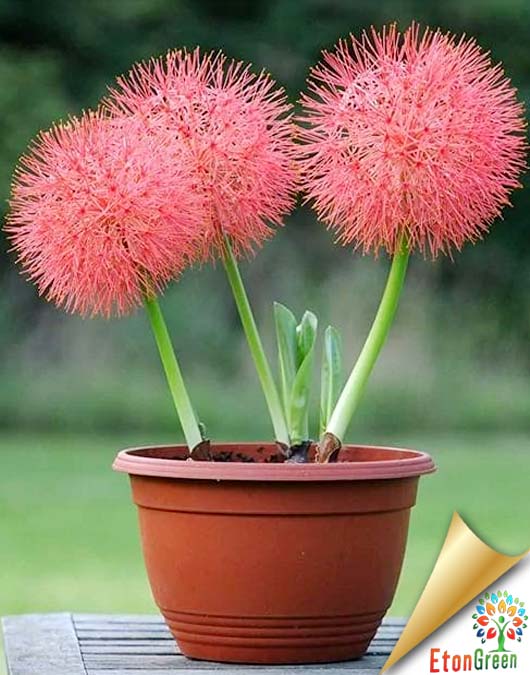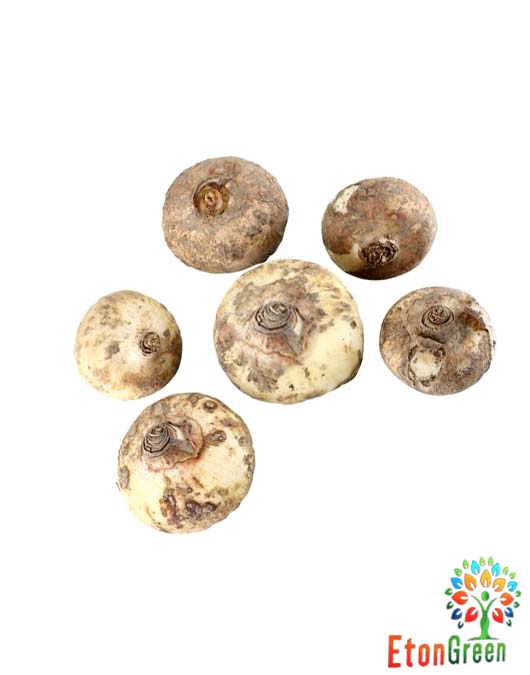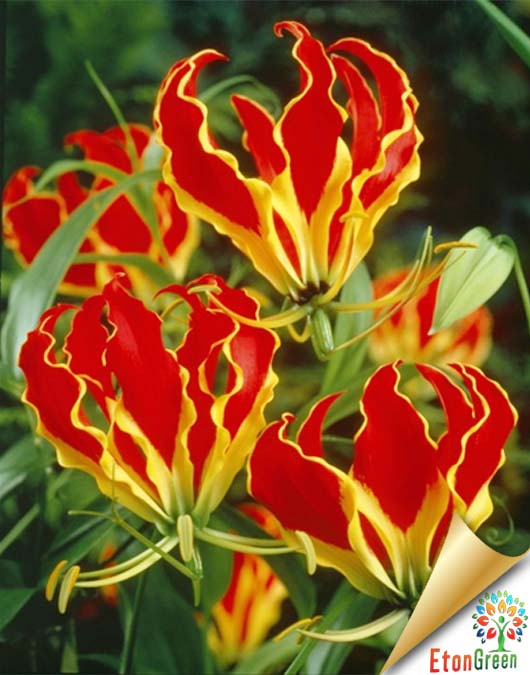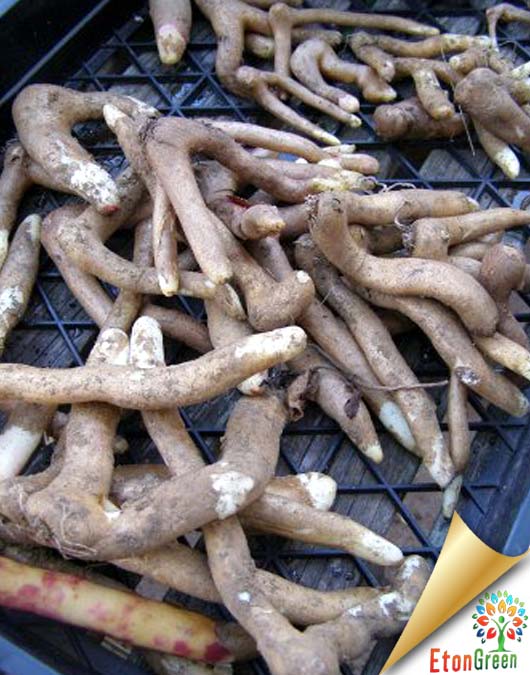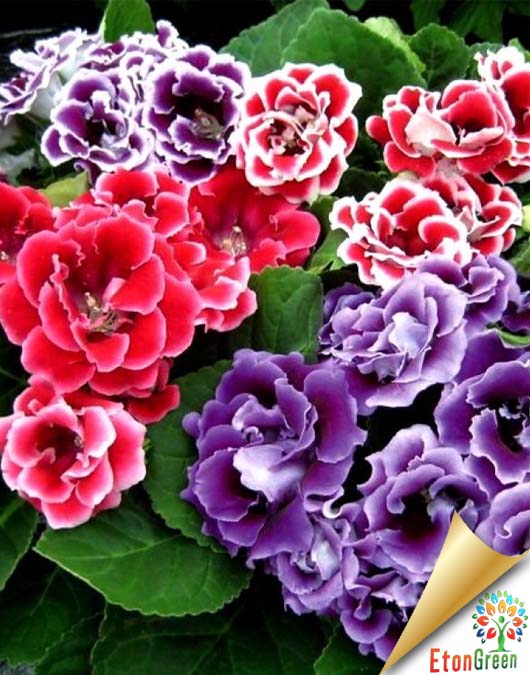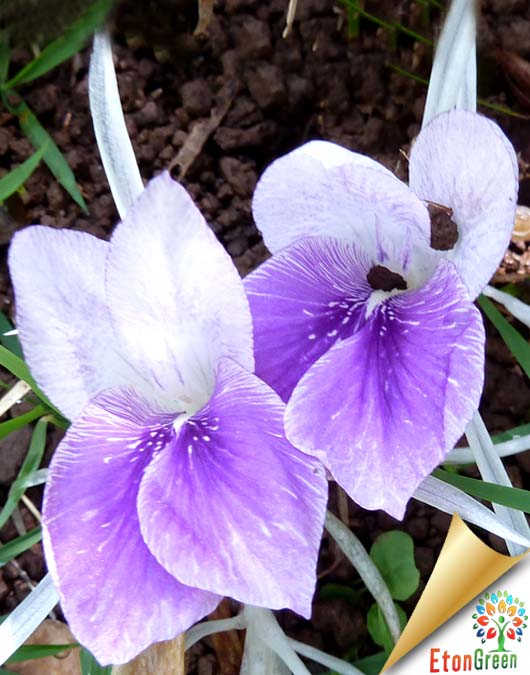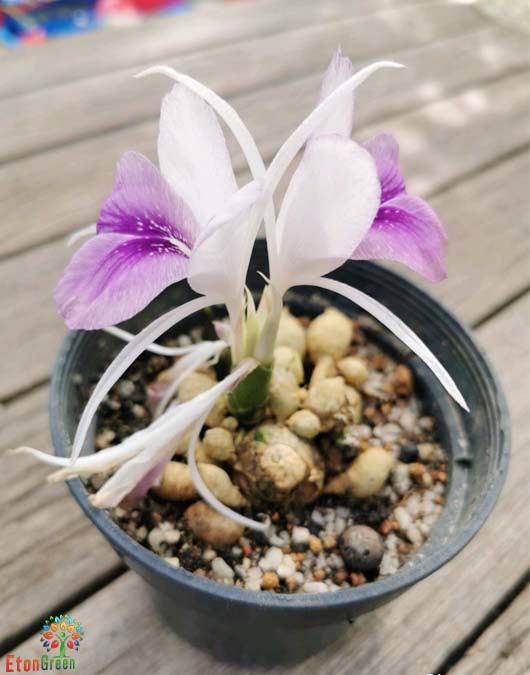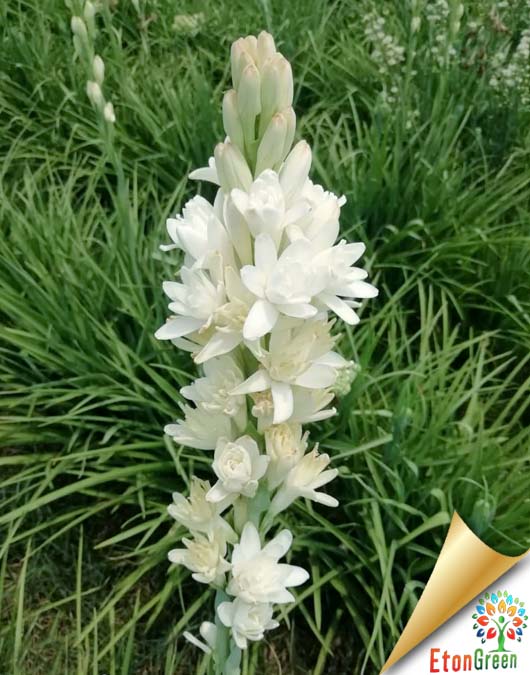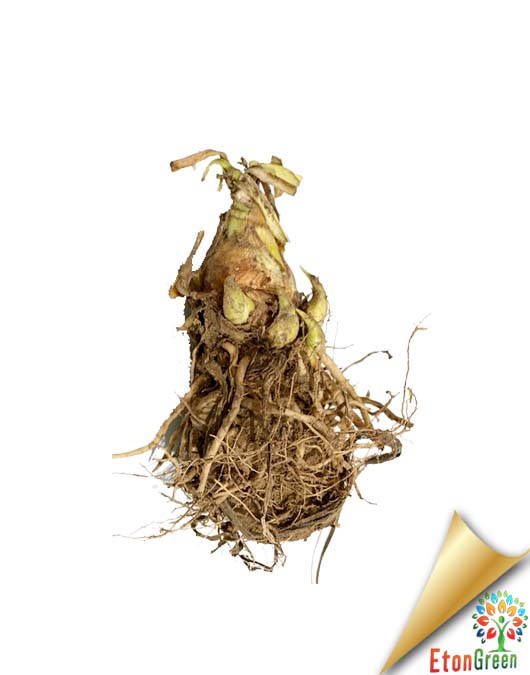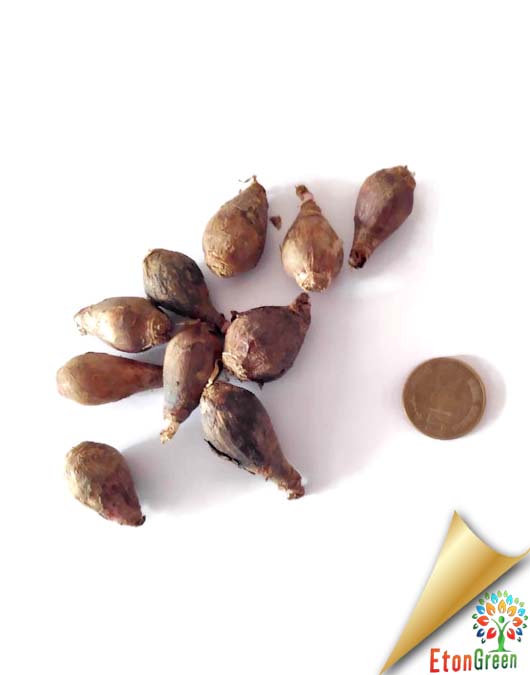Out Of Stock
EtonGreen Football Lily Pink Flower Bulbs (Set of 5)
- Shipping charge ₹ 90 for entire order
- Scadoxus multiflorus is the scientific name of football lily. This perennial grows from a rhizomatous bulb. It has a false stem as leaves are wrapped together. Leaves may appear after flowering or with them. A false stem can grow up to 60 cm.
- Football lily Bulb This name is a synonym of Scadoxus multiflorus (Martyn) Raf. Each plant will produce only one flowerhead in a season. Blood lily is a bulbous plant with leaves on short, speckled stalks. The flower stalk bears a rounded inflorescence, 8-12 cm across. The plant may live for many years and will flower annually indoors.
- Common Name- Football lily, blood lily, ball lily, blood flower, Katherine-wheel, oxtongue lily, poison root and powderpuff lily
- Scientific Name- Scadoxus multiflorus
- Watering- Medium
-
Caring for Haemanthus Multiflorus
- Pruning is generally not required, just remove the spent flowers.
- Bulbs may be planted outdoors directly in the garden in spring after last frost date.
- Reduce moisture in the winter season.
- Shipping charge ₹ 90 for entire order
- Pick these easy-to-grow varieties for the best blooms. It is a rhizomatous herbaceous perennial plant, evergreen where rainfall and temperatures are adequate.
- It has large clumps of broad, arrow shaped dark green leaves up to 45 cm long.
- The inflorescences are large and are produced in spring, summer and autumn, with a pure white spathe up to 25 cm and a yellow spadix. The spadix produces a faint, sweet fragrance.
- Dig up the rhizomes in autumn, usually after the first frost and store for winter.
- Dig a hole about three times as deep as the height of the bulb.
- Set the bulb in the hole, pointy end up, then cover with soil and press firmly
- Space bulbs 8 to 10 inches apart
- Water thoroughly after planting
- Use the potting mix for bulb plantation as Garden soil + Compost + Perlite + Sand (2:2:1:1) Soil + Cocopeat + vermicomposting (2:1:2)
- Keep them adequately fertilized and watered, misting the plant every so often to keep the ambient humidity high
- They are susceptible to aphids so, take a look closely and apply insecticide.
- Shipping charge ₹ 90 for entire order
- Did you know that gloxinia can be grown as house plants? True! Gloxinia are fabulous gift plants AND can be spectacular house plants if you give them proper care.
- A few years ago, a gloxinia flowering houseplant (Sinningia speciosa) was considered a perennial. The plants would bloom and then die back. After a period of dormancy, the plant would regrow, delighting its owner with a fresh flush of big, velvety flowers.
- Todays gloxinias are hybrids that are bred to quickly produce a large number of blossoms. These gloxinias produce an outstanding display for about two months, but once the flowers fade, the plant rarely comes back because it invests all its energy into flowers rather than sturdy roots. Therefore, these plants are best grown as annuals, and since they are discarded after the bloom cycle, gloxinia flower care focuses on keeping the plant looking fresh while it is in bloom.
- Shipping charge ₹ 90 for entire order
- Kaempferia plant blooms the fragrant flowers. Its flower emerges straight from the ground, even before the leaves appear.
- Kaempferia is a stemless plant producing a pseudo stem with 2 to 4 erect leaves from an underground rhizome that has small tuberous roots. Flowering stems are produced from the rhizome when the leaves are not present. Flowers resemble small orchids or African violets but have just three petals.
- Water a plant when the soil feels dry to touch
- Water thoroughly in the summer and reduce watering for the winter & rainy season
- Try to water the plants in the morning around 8-10am
- You should remove dead, infected or damaged plant parts and throw in the garbage collector
- You should fertilize a plant mostly in the spring season, flower bud stage
- Plant season is in monsoon or autumn season
- Plant the bulb 3 inches deep and provide 3 to 4 inches of planting spacing
- The pointy part should face up
- Add some coarse sand or fine gravel to the soil to help improve the drainage Mulch the potting mix with organic material
- Shipping charge ₹ 90 for Entire order.
- Sparaxis Flower bulbs Also known as wandflower or harlequin flower, these colorful members of the iris family have open star-shaped white, orange, lavender, yellow or pink flowers often centered with contrasting symmetrical patterns.
- Sparaxis Flower bulbs Common name: Harlequin, Wand flower, Sparaxis
- Color: Pink, yellow, Red, Purple
- Height: Sparaxis flowers grow an average height of about 10 inches high. The total plant height is 12 to 18 inches.
- Difficulty level: Easy
- Planting & Care
Use them as an accent in mixed beds and borders, rock gardens and containers. - Sunlight: They need full sun to grow and flower.
- Soil: The soil should be kept continually moist, especially after planting.
- Water: Water the bulbs immediately, and cover the area with a layer of mulch. Water garden plants as needed, especially during the first six weeks after planting.
- Fertilizer: Apply any organic fertilizer once in 2 months
- Care:
- Little Sparaxis plant care is necessary with these flowers.
- In wet summer gardens, the corms are best lifted and stored but in well-drained areas, they can be left in the ground.
- Some species of the genus are not cold hardy.
- So if you live in colder regions, dig up the corms and store them before the first frost.
- The corms multiply rapidly if well watered throughout the growing season.
- Seeds can be sown in autumn and will flower the second spring or the offsets can be divided during dormancy and replanted.
- Shipping charge ₹ 90 for entire order
- If you crave plants that uniquely delight every sense, consider growing Tuberose this summer. With a powerfully sweet and heavy aroma, these classic charmers have been used as a key ingredient in perfumes for centuries. The Pearl is a radiant variety featuring dense clusters of double, waxy white flowers growing along a 20″-28″ stalk that rises above clumps of grass-like foliage.
- You’ll be amazed at how quickly these elegant beauties fill the air with their enchanting aroma. Here’s an extra pearl of wisdom – use the single form as a long-lasting cut flower and the double form in the garden, as the top blooms will open fully when left on the plant. Enjoy!
- Growing Rajnigandha Bulbs is an easy task, it is an easy-care flower which does not require special expertise to grow it as house flower plant. The tuberose is a night-blooming plant. Growing Rajnigandha Polianthes Tuberosa Bulbs is an easy task, it is an easy care flower which does not require special expertise to grow it as house flower plant. Keep the soil consistently moist before and during the period of bloom that occurs in late summer.
- It grows in elongated spikes up to 18 inches long that produce clusters of fragrant waxy white flowers that bloom from the bottom towards the top of the spike. It has long, bright green leaves clustered at the base of the plant and smaller, clasping leaves along the stem.
- Dig a hole and sow the bulb up to 5 cm deep
- Set the bulb in the hole, pointy end up, then cover with soil and press firmly
- Space bulbs 4 to 6 inches apart
- Water thoroughly after planting
- Use the potting mix for bulb plantation as Garden soil + Compost + Perlite + Sand (2:2:1:1)Soil + Cocopeat + vermicompost (2:1:2)
- Shipping charge ₹ 90 for entire order
- Rain lily Leaves are a deep glossy green and measure 3 mm wide. Flowers, which at first resemble a new leaf, but emerge from their papery sheaves to a stunning whiteness; they are erect in perianth.
- Zephyranthes can be deciduous or evergreen bulbous perennials, with linear leaves and funnel-shaped or crocus-like flowers in spring, summer or autumn.
- Plant zephyranthes bulbs in a place that receive full sun
- Dig holes and plant the bulbs 1-2 inch deep and 6 inch apart
- Sow bulbs into a hole made with your finger or the end of a stick
- Poke, drop, cover
- After planting, water well, gently soaking the soil and settling it around the bulbs
- Germination will begin in 10 to 15 days
- Rain lilies are happiest with little moisture during spring and summer, with a bit more water late in the season to trigger flowering
- Plant the bulbs immediately and do not store for long time
- Its star shape attractive flowers increase the beauty of any empty space.
- The star shape flowers are mostly used for ornamental purpose in garden, balcony, terrace, etc.

